Gastric dilatation volvulus ([GDV] i.e, bloat) is a rapidly progressing, complex veterinary emergency that requires immediate veterinary attention. Our West Vets Emergency Veterinary Clinic team fully explains this potentially life-threatening condition, so you learn to recognize the signs if your dog is affected.
Gastric dilatation volvulus in dogs basics
GDV occurs when food and gas in the stomach cause the organ to significantly dilate and expand. In some cases, the stomach may also rotate 270 to 360 degrees. Significant consequences can occur, including:
- Blood flow obstruction — The expanded stomach prevents adequate blood return to the heart from the abdomen.
- Devitalized stomach lining — Blood flow to the stomach lining is blocked, potentially causing cell death and sloughing.
- Stomach wall rupture — If the pressure isn’t relieved, the stomach wall can rupture.
- Breathing impairment — The expanded stomach places pressure on the diaphragm, preventing the lungs from adequately expanding, and interfering with breathing.
- Inadequate spleen perfusion — If rotation occurs, blood flow to the spleen is blocked.
- Hypoxia — Decreased cardiac output and respiration leads to inadequate oxygen delivery to many tissues. This can damage vital organs, including the heart, kidneys, and liver.
- Heart arrhythmias — Cardiac hypoxic damage often leads to arrhythmias.
- Sepsis — If the gastrointestinal (GI) lining is compromised, bacteria can enter the bloodstream, leading to sepsis.
Large and giant purebred dogs and those who have a high thoracic depth-to-width ratio have an increased GDV risk. Commonly affected breeds include Great Danes, weimaraners, Saint Bernards, and Irish and Gordon setters. GDV risk also seems to increase as a pet ages.
Gastric dilatation volvulus signs in dogs
Any dog can develop GDV. However, if your dog has a high risk of developing this condition, you should be aware of GDV signs, which may include:
- Distended abdomen
- Abdominal pain
- Anxiously looking at the abdomen
- Standing and stretching
- Excessive drooling
- Unproductive retching or belching
- Dry heaving
- Weakness
- Difficulty breathing
- Increased respiration rate
- Pale gums
- Lethargy
- Restlessness
If your dog exhibits signs indicating GDV, immediately contact our West Vets Emergency Veterinary Clinic team. Prompt veterinary intervention is necessary to improve your dog’s survival chances.
Gastric dilatation volvulus diagnosis in dogs
Our team can make a presumptive GDV diagnosis based on your dog’s breed and signs. We may also perform these diagnostic tests:
- X-rays — X-rays can help our West Vets Emergency Veterinary Clinic team determine if your dog’s stomach is twisted or only bloated.
- Blood work — We perform a complete blood count (CBC) and biochemistry profile to check for metabolic disturbances and evaluate your dog’s organ health.
- Electrocardiogram (ECG) — Because cardiac arrhythmia is commonly seen in GDV patients, we may perform an ECG.
Gastric dilatation volvulus treatment in dogs
GDV treatment almost always involves surgery, but our team must stabilize your dog before we can safely administer anesthesia. GDV treatment includes:
- Intravenous (IV) fluids — IV fluids are usually necessary to correct hypotension and metabolic disturbances.
- Oxygen therapy — Many dogs need oxygen therapy to help counteract hypoxia.
- Gastric decompression — Our team passes a flexible tube down your dog’s esophagus into their stomach to help built-up gas escape, which helps restore normal blood flow.
- Gastric derotation — Once your dog is stabilized, we can proceed with surgery and correct the stomach’s position.
- Remove devitalized material — We assess the stomach wall, spleen, and other potentially compromised organs and remove devitalized tissue.
- Gastropexy — We permanently affix the stomach to the abdominal wall to help prevent GDV recurrence.
After surgery, most dogs are hospitalized to receive IV fluids, pain and antinausea medications, and monitoring. Full recovery typically takes several weeks.
Gastric dilatation volvulus prevention in dogs
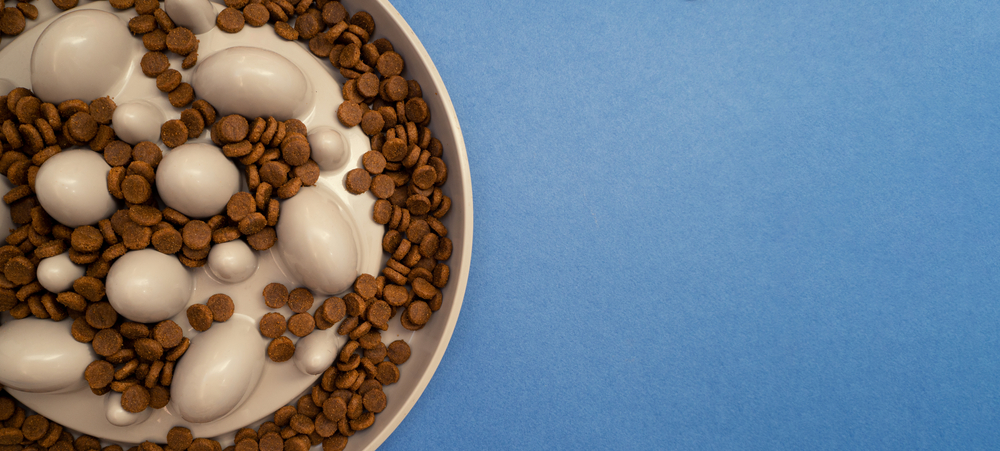
Many bloat-prevention suggestions posted on the internet are ineffective. However, to help decrease your dog’s GDV risk, follow these tips:
- Feed multiple meals — Dogs fed one meal per day are twice as likely to bloat as those who are fed two or more meals per day.
- Use a slow feeder — Dogs who gulp their food are five times more likely to experience GDV than those who eat slowly. Use a slow feeder to ensure your dog doesn’t eat too quickly.
- Ensure your dog is calm — Stressed and hyperactive dogs are more likely to bloat. Ensure your dog is calm before feeding.
- Separate your dogs — If you have multiple dogs, separate them at feeding time to prevent anxiety related to food.
- Avoid activity — Don’t let your dog participate in strenuous activity immediately after eating.
- Preventive gastropexy — A preventive procedure to affix the stomach to the abdominal wall, preventive gastropexy can be performed in high-risk dogs. However, you should consult your veterinarian about this option to determine if your furry pal is a good candidate.
If your dog experiences GDV, our West Vets Emergency Veterinary Clinic team will work closely with your primary care veterinarian to ensure your furry pal receives the care they need once they are released from the hospital. If your dog is exhibiting GDV signs, immediately give us a call, so we can provide the care necessary to improve your four-legged friend’s survival chances.


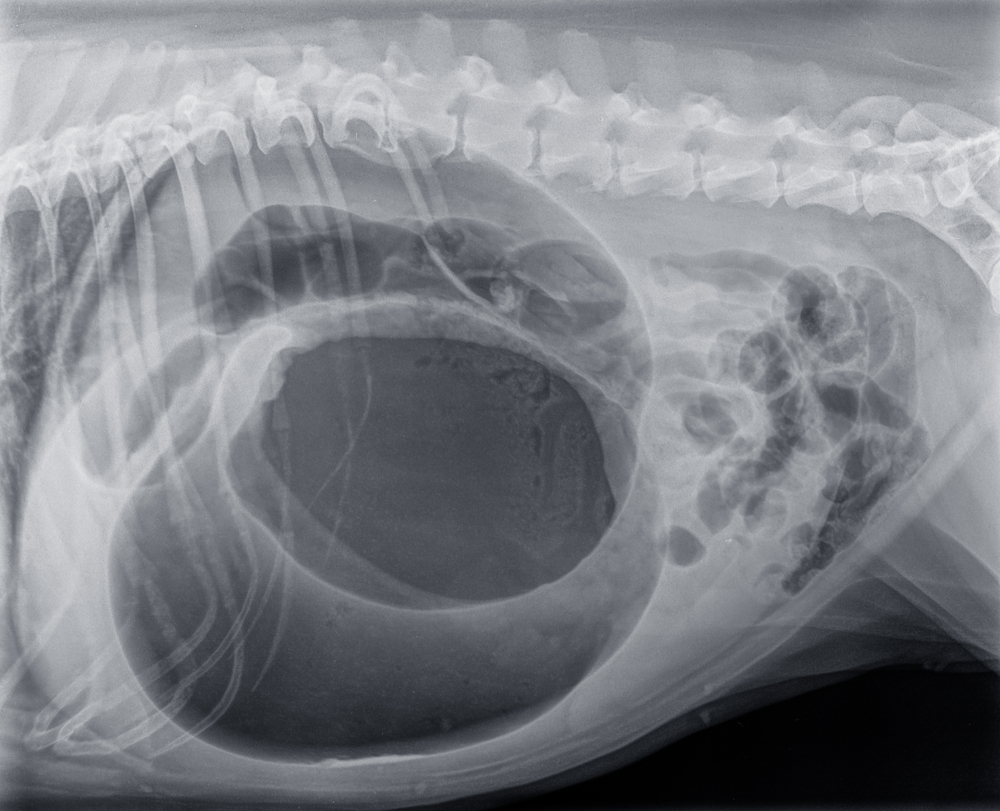
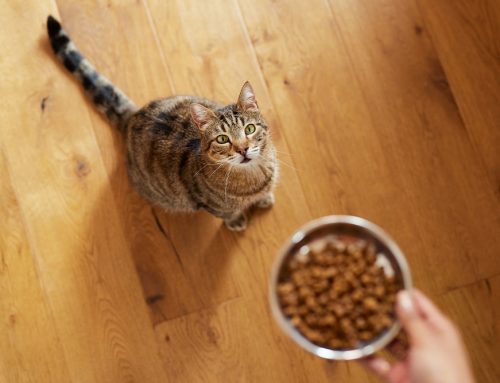
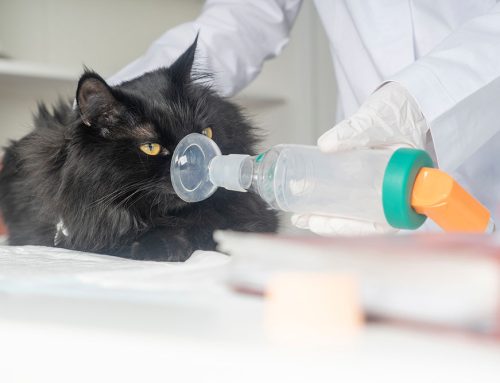
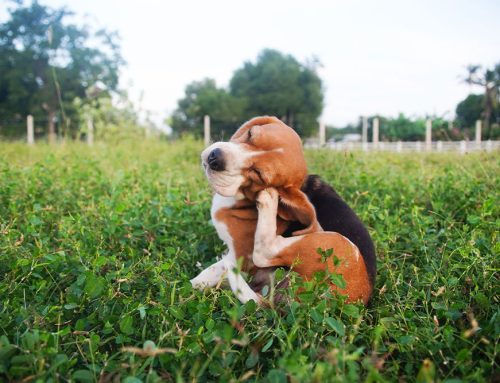

Leave A Comment